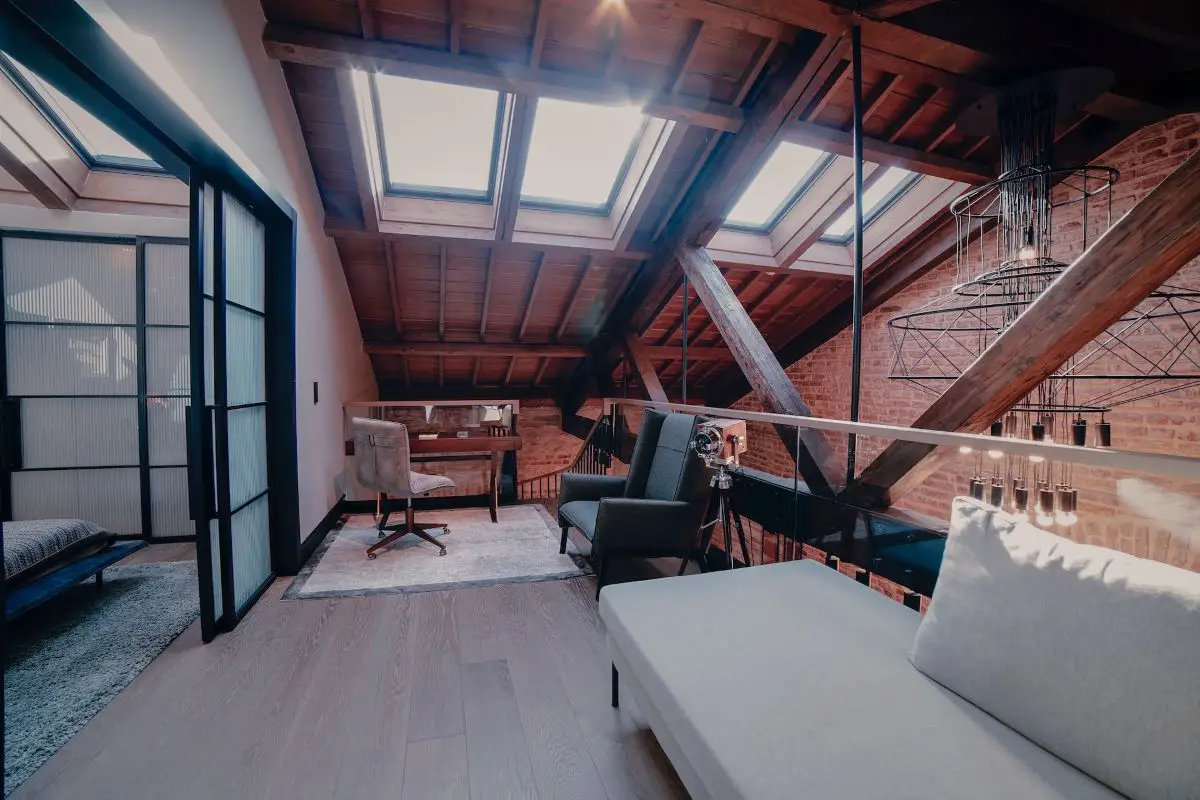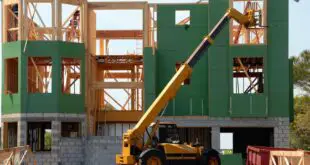You may encounter many types when looking for a property to purchase or rent. Apartments, condominiums, duplexes, lofts, etc. Lofts are confusing to many, as there does not seem to be a proper concept for the property. What is a loft?
A loft is an open space on a building’s second floor, separate from the rest of the building. A loft often allows some degree of privacy but remains open and feels like a part of the overall building. As a result, lofts can be used in many ways, such as living, office, or commercial spaces.
This post discusses about lofts, why are they so popular, and some of the issues that come with living in lofts.
What Is A Loft?
A loft is a big, open space, usually without any walls inside. Lofts are traditionally created by converting unused warehouses with exposed brick, pipes, and support beams. Still, some modern lofts may not have these features.
It is similar to a studio apartment in that neither has a separate bedroom. Still, lofts are usually much bigger, with an average of 1,000 to 2,000 square feet (93-186 square meters) compared to an average of 600 square feet (55 square meters) for a studio.
Lofts serve as a way to create new space to alleviate space constraints in high-density areas, such as in big cities. Lofts also have a way of generating a degree of privacy while remaining part of the overall structure. As such, lofts are often further renovated to become offices, homes, or commercial spaces.
Lofts usually have tall windows and ceilings that are about 10 feet high. If designs are to be incorporated, the designs tend to emphasize the open space, natural lighting, and airiness of the space. As a result, lofts do not see much storage space or walls. If there are any separators, transparent materials such as glass may be used to allow lighting to pass through.
Lofts have also developed an image of ‘urban, trendy’ living. As such, they are well appreciated by younger adults, who live alone and often have professional careers. Some companies also create offices out of their warehouses by constructing a loft inside.
Is A Loft and An Attic The Same?
A Loft is not an attic. This is because lofts often extend from the ‘second’ floor of the building to just below the roof. An attic begins right after the loft ends and usually takes up the space right under the roof. Attics are also usually enclosed spaces, while lofts are usually open.
People may sometimes confuse between an attic and a loft since they refer to the space on top of the ground floor. However, a loft is not an attic, although technically, they could be seen as the same.
In general, you can consider a loft to extend from the ‘natural’ second floor of the structure to just under the roof. Right after that, you may consider it attic territory. Attics are conventionally assumed to be the space right underneath the roof and the highest flat ceiling of the structure.
A loft may not occupy the entirety of the structure, as usually, a loft is built to take up only some of the higher floor space of the structure. If you visit warehouses, for example, you may see that lofts are only built to occupy not more than half of the warehouse. If the loft is built over the entirety of the warehouse, it may be called a second floor.
Attics apply the same logic, but regardless if the attic is built over the entirety of the roof structure, it is still called an attic.
What Makes Lofts Different From Apartments?
Lofts suffer from apartments in that they are often much larger in size. Lofts also tend to have less storage space. Its openness can result in less overall privacy for those living or working in it. Lofts may be more expensive than apartments since they are larger and may cost more to maintain since heating and cooling may cost more.
Size
In general, lofts are larger than apartments. This is because lofts are often repurposed out of a large open structures, such as warehouses or workshops. Lofts are usually much bigger, with an average of 1,000 to 2,000 square feet (93-186 square meters) compared to an average of 1,000 square feet (93 square meters) for an apartment.
Storage Space
Lofts tend to have less storage space than apartments. This is because lofts are often created out of bare spaces, while apartments are built specifically for living. As such, apartments are designed with the idea of allowing their occupants to store things. This means you may see much more cabinets, shelving and cupboards.
Lofts are often left barren without designs, with only furniture placed in. Suppose interior design is being done on a loft. In that case, the designs often stress and try to maintain their openness and airiness. Which means fewer walls, storage spaces, and cabinets.
Versatility
Lofts tend to be much more versatile compared to apartments. This is because of the open space the loft has. The space can be converted into multiple uses. It can become a cozy home, an office with desks, or workshops full of tools. Lofts can also be converted into commercial spaces or host events such as parties. Apartments tend to be restricted into living spaces and are designed to be so.
Privacy
A loft tends to be an open space built out of a rather open public space, such as a warehouse. It has few walls and emphasizes its open space, brightness and airiness. As such, it may not offer a high degree of privacy.
This is contrasted with apartments, which are focused on as a living space. This means designers and builders often try to incorporate privacy features into apartments, such as enclosed rooms and walls that extend to the ceiling.
You may like this article: What Is A Lanai?
Price
Lofts are often more expensive than apartments. This is because lofts are usually larger. Lofts are often built on repurposed large structures such as warehouses, which are in locations closer to the city. These also made it more expensive.
Lofts are also higher in cost to maintain and run, as their large open space means you may need to spend more to warm them in winter and cool them in summer. Lofts are also built inside a commercial or industrial space, meaning the electricity and water bills may also be on industrial or commercial rates. Commercial or industrial rates tend to be higher than residential rates.
Why Are Lofts So Popular?
Lofts are popular because they are versatile space convertible for many uses. It is also usually large, open, airy, and bright. Lofts are also usually located close to the city, making them popular with those working there. Finally, lofts can be easily renovated. Lofts are also a way to gentrify a location.
Repurposing Old Buildings
Lofts can be seen as a way to repurpose old buildings that are no longer in use. Often post-industrial cities may suffer from a loss of their industrial base, meaning many of their workshop and warehouse buildings are left empty and unkempt. Post-industrial industries such as IT, banking, or service may not require a warehouse to operate, making the building redundant.
By building lofts inside the structure, it can help to repurpose the building. Instead of a warehouse, the space could be turned into living and commercial spaces, helping to bring people, vitality, and commercial activities to the area. It is also a way to gentrify a location.
Separate Areas For Multiple Uses
Lofts can also be very popular as they can create a new space that can perform a separate function from its ground floor. For example, it is common for a company to use the ground floor as a warehouse to store goods, vehicles, and tools, while the loft functions as an office and meeting room.
It is also common to see empty warehouses being converted into co-working and living spaces. Usually, the ground floor is converted into a large co-working space, then the loft becomes a co-living space.
Open And Bright
Lofts are usually open, full of natural light, and airy. Such space generates a feeling of positivity and comfort that may put a human at ease. As a result, it can be used in many ways. It is common to see a loft being renovated to become houses, offices, and commercial spaces. You may also see lofts being used to conduct classes and seminars or host events such as parties or religious activities.
You may like this article: What Is A Den?
What Are The Problems Of Living In Lofts?
Lofts can feel less private and may cost more to maintain over the long term. They also are less sturdy, as they are commonly built with a less stable foundation. Lofts can also be noisy and blur the space between living and working, meaning it may be hard to maintain a work-life balance.
Lack Of Privacy
Lofts are open, airy spaces with little walls. Even if there are any, they tend to be low and not extend to the ceiling. Lofts often do not properly separate themselves from outside space. Often an open stair is what separates it from the floor below, instead of a door. As a result, lofts can lack a sense of privacy and may not be comfortable for some.
Higher Maintenance Cost
Loft’s open and airy space also may cause it to cost more money to maintain in the long run. It may cost more to warm the space in winter and cool it in the summer. You also tend to be subjected to industrial or commercial rates when paying for your utilities, which may be more expensive than residential.
Less Sturdy
Lofts tend to be constructed inside an open space long after the space has been built. As such, the construction tends to be less permanent. For example, instead of concrete beams and floors with steel reinforcement, lofts are often built with steel I-beams with wood flooring. This may make loft floors less sturdy. You may even hear creaks when you walk on it.
Blur Work-Life Balance
Lofts are also built on top of commercial or industrial spaces, which are working spaces. If you convert your loft into a living space, it may cause you to constantly feel like you are at work, although when you are in a living space. You may be unable to totally relax and unwind, which may not be acceptable to some.
 Being Human
Being Human




